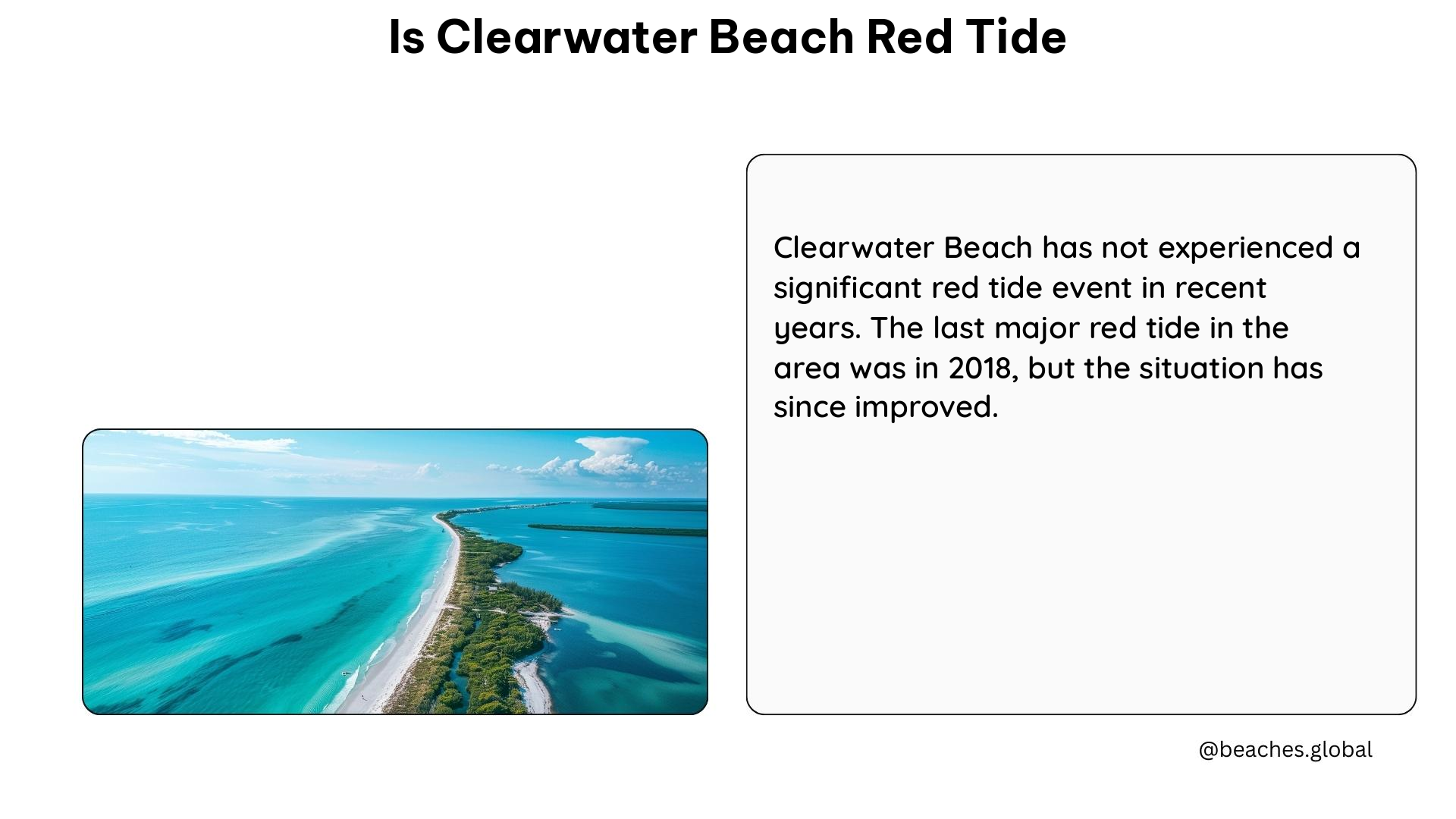Clearwater Beach, a popular tourist destination in Florida, is known for its beautiful white sand beaches and crystal-clear waters. However, the presence of red tide, a harmful algal bloom, can significantly impact the beach’s appeal and safety for visitors. In this blog post, we’ll explore the current status of red tide at Clearwater Beach and provide you with the latest information to help you plan your visit.
The Current Status of Red Tide at Clearwater Beach
According to the latest reports from the Florida Fish and Wildlife Conservation Commission (FWC), Clearwater Beach is currently not experiencing any red tide. The FWC’s red tide status page indicates that the red tide organism, Karenia brevis, was not observed in samples collected statewide over the past week. Additionally, the University of South Florida models suggest that the large bloom is not likely to come into the Clearwater region.
Understanding Red Tide

Red tide is a term used to describe a harmful algal bloom (HAB) that can occur in coastal waters. These blooms are caused by the rapid growth of certain types of microscopic algae, such as Karenia brevis, which can produce toxins that can be harmful to marine life and humans.
When a red tide event occurs, the water can appear reddish or brownish in color, hence the name “red tide.” The toxins produced by the algae can accumulate in shellfish, such as clams and oysters, and can cause respiratory irritation and other health issues in people who come into contact with the affected water or consume contaminated seafood.
Factors Affecting Red Tide at Clearwater Beach
The presence and intensity of red tide at Clearwater Beach can be influenced by a variety of factors, including:
-
Nutrient Levels: Excessive nutrients, such as nitrogen and phosphorus, can contribute to the growth of harmful algae. These nutrients can come from various sources, including agricultural runoff, sewage, and industrial waste.
-
Water Temperature: Warmer water temperatures can create favorable conditions for the growth of Karenia brevis and other harmful algae.
-
Currents and Wind Patterns: The movement of ocean currents and wind patterns can transport the red tide organisms to different coastal areas, affecting the distribution and intensity of the bloom.
-
Rainfall and Freshwater Inflow: Heavy rainfall and increased freshwater inflow can dilute the salinity of the water, which can either promote or inhibit the growth of Karenia brevis.
Monitoring and Reporting Red Tide
The FWC and other agencies closely monitor the presence and intensity of red tide in Florida’s coastal waters. They collect water samples and analyze them for the presence of Karenia brevis and other harmful algae. This information is then used to provide updates and advisories to the public, including beach-goers and seafood consumers.
If a red tide event is detected, the FWC will issue alerts and advisories to inform the public about the potential risks and any necessary precautions. These may include:
- Warnings about the consumption of certain types of seafood
- Advisories about swimming or engaging in water-based activities in affected areas
- Recommendations for individuals with respiratory conditions or allergies to avoid the affected areas
Visiting Clearwater Beach During Red Tide
If a red tide event is present at Clearwater Beach, there are a few important things to keep in mind:
-
Avoid Swimming or Water Activities: It’s best to avoid swimming, wading, or engaging in water-based activities in areas affected by red tide, as the toxins can cause skin irritation and respiratory issues.
-
Avoid Consuming Local Seafood: Shellfish, such as clams and oysters, can accumulate the toxins produced by the red tide algae. It’s important to avoid consuming any locally harvested seafood during a red tide event.
-
Monitor Advisories and Warnings: Stay informed about the latest updates and advisories from the FWC and local authorities. They will provide guidance on the current status of the red tide and any necessary precautions.
-
Consider Alternative Beach Destinations: If Clearwater Beach is experiencing a red tide event, you may want to consider visiting other nearby beaches that are not affected, such as Caladesi Island or Honeymoon Island.
Conclusion
Clearwater Beach is currently not experiencing any red tide, according to the latest reports from the FWC. However, it’s important to stay informed about the potential for red tide events, as they can significantly impact the beach’s appeal and safety for visitors. By understanding the factors that affect red tide and monitoring the latest updates, you can plan your visit to Clearwater Beach with confidence and enjoy the beautiful white sand and crystal-clear waters.
